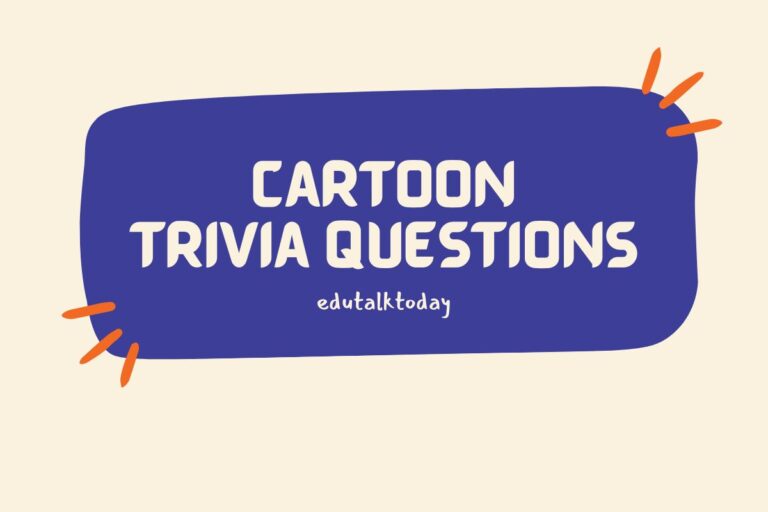30 Horse Trivia Questions
Horses have been our companions for centuries, serving as loyal companions, transportation, and even in sports and entertainment.
But have you ever put your knowledge on horses to the test?
If you haven’t, now is the time to do it.
Here are some trivia questions on horses, exclusively crafted for you.
Horse Trivia Questions
- Historical Breeds: What now-extinct horse breed, known for its speed and endurance, is believed to be one of the three foundational breeds that contributed to the modern Thoroughbred?
- Anatomical Specifics: How many bones are there in the average adult horse’s skeleton, and what is the range this number can vary by due to breed or individual differences?
- Genetic Diversity: The Przewalski’s horse is often cited as the only truly wild horse species remaining. What unique genetic characteristic distinguishes it from the domestic horse?
- Olympic History: Equestrian sports have a long history in the Olympic Games. In what year were women first allowed to compete in Olympic equestrian events, and what events were they permitted to enter?
- Literary Significance: “Black Beauty” is a classic novel that anthropomorphizes the life of a horse to critique the mistreatment of horses in Victorian England. Who is the author of “Black Beauty”?
- Horse Vision: What is unique about a horse’s field of vision, and what is the term used to describe the small area where they cannot see?
- Famous War Horses: Name the horse that is often considered one of the most famous war horses in history, belonging to Alexander the Great.
- Rare Coat Patterns: What is the name of the rare horse coat pattern that results in a horse having a white base coat with dark spots, which is primarily associated with the Appaloosa breed?
- Gaits Diversity: What is the name of the gait that is unique to only a few horse breeds, described as a smooth, four-beat, lateral gait?
- Historical Figure’s Favorite Breed: What was the favorite horse breed of Queen Elizabeth II, known for its versatility and good temperament?
- Evolutionary Ancestry: What is the name of the ancient predecessor of modern horses, which lived approximately 50 million years ago and was the size of a small dog?
- Horse Communication: What term describes the vocal communication method horses use, characterized by low to high-pitched sounds, to convey information or express their emotional state to others?
- Record Breakers: What is the name of the horse that holds the record for the highest jump ever completed by a horse in official show jumping history?
- Famous Racing Legends: Which horse won the United States Triple Crown of Thoroughbred Racing in 1973, setting race records in all three events that still stand today?
- Equine Breeds Origin: The Akhal-Teke breed is known for its metallic sheen, but from which country does this ancient and rare breed originate?
- Historical Horse Care: In medieval times, horses were essential for transport and war. What was the name of the protective armor worn by horses to safeguard them during battles?
- Equine Nutrition: What is a unique characteristic of the horse’s digestive system that distinguishes it from other farm animals and makes certain feeding practices essential for their health?
- Longevity Record: What is the recorded age of the oldest horse ever documented, and what was the horse’s name?
- Cultural Impact: The Lipizzaner horses are famous for their performances in classical dressage. Which European country is the original home of the Lipizzaner breed?
- Equine Sports: In endurance riding, what is the maximum distance of the longest competitive endurance rides, and which country is known for hosting such events?
- Genetic Curiosities: What genetic mutation causes the unique blue roan coat color in horses, and how does it affect the horse’s appearance over its lifetime?
- Historic Equestrian Sports: Polo, known as the “Sport of Kings,” has ancient origins. What civilization is credited with inventing polo?
- Horse Behavior: What term is used to describe the behavior when a horse stands on its hind legs?
- Equine Literature: Which novel, set during the American Civil War, features a horse named Traveller as a prominent character?
- Iconic Horse Races: The Melbourne Cup is a prestigious horse race held annually in Australia. In what year was the first Melbourne Cup race run?
- Famous Show Jumpers: Which horse, ridden by Nick Skelton, won individual gold in show jumping at the 2016 Rio de Janeiro Olympics?
- Equine Health: What is the name of the common equine disease characterized by inflammation of the hoof’s laminae, often linked to dietary issues?
- Horse Breeding: What term is used to describe a horse that has one purebred parent and one parent from a different breed or mixed breed?
- Historical Horse Figures: Which horse is known as the founding sire of the Standardbred horse breed?
- Equine Art: The ancient Lascaux Caves in France are famous for their prehistoric cave paintings. What is one of the predominant animal figures depicted in these artworks?
Answers
- Byerley Turk, Darley Arabian, and Godolphin Arabian are the three foundational breeds, but the question specifically asks for the now-extinct breed among these, which is a trick question as all have descendants but are foundational.
- Between 205 to 210 bones in the average adult horse’s skeleton. The variation depends on the breed and the presence of additional vertebrae or sesamoid bones.
- 66 chromosomes; Przewalski’s horses have 66 chromosomes compared to the 64 of domestic horses.
- 1952, women were first allowed to compete in Olympic equestrian events, specifically in dressage.
- Anna Sewell is the author of “Black Beauty”.
- Horses have nearly 350-degree field of vision with blind spots directly in front and behind them, termed as the blind spots.
- Bucephalus was Alexander the Great’s war horse.
- Leopard complex is the genetic mechanism behind the coat pattern, but the pattern itself is often referred to as “Leopard” or “Appaloosa” pattern.
- The Paso Fino is known for its unique gait, but the question asks for the name of the gait, which is the “Paso” gait or specifically “running walk” for some breeds like the Tennessee Walker.
- The Fell Pony was among Queen Elizabeth II’s favorite breeds, known for its hardiness and versatility.
- Eohippus, also known as the “dawn horse.”
- Neighing or whinnying is the term for the vocal communication method horses use.
- Huish, ridden by Captain Alberto Larraguibel Morales, holds the record with a jump of 2.47 meters (8 feet 1 inch) in 1949.
- Secretariat won the Triple Crown in 1973 with record times in the Kentucky Derby, the Preakness Stakes, and the Belmont Stakes.
- Turkmenistan is the country of origin for the Akhal-Teke breed.
- Barding (or horse armour) was worn by horses during medieval times for protection in battle.
- Horses have a single large stomach and cannot vomit, which affects how they process feed and requires frequent small meals to prevent colic.
- The oldest horse ever documented was “Old Billy”, who lived to be 62 years old.
- Austria is the original home of the Lipizzaner breed, particularly associated with the Spanish Riding School in Vienna.
- The maximum distance for competitive endurance rides can be up to 160 kilometers (100 miles), with the United Arab Emirates being known for hosting such long-distance endurance events.
- The Roan gene causes the blue roan coat color, characterized by a mixture of colored and white hairs on the body, while the head, mane, tail, and lower legs are typically solid in color. This appearance generally remains consistent throughout the horse’s life, though it can vary slightly with age.
- Persia (modern-day Iran) is credited with inventing polo, with the game dating back to at least the 6th century BCE.
- Rearing is the term used when a horse stands on its hind legs.
- “Traveller” is the horse featured in the novel “Traveller” by Richard Adams, which is told from the perspective of Robert E. Lee’s horse but set during the American Civil War.
- The first Melbourne Cup race was run in 1861.
- Big Star was the horse ridden by Nick Skelton to win individual gold in the 2016 Olympics.
- Laminitis is the disease characterized by inflammation of the laminae in the hoof.
- A horse with one purebred and one non-purebred parent is referred to as a crossbred.
- Hambletonian 10 is known as the founding sire of the Standardbred horse breed.
- Horses are one of the predominant animal figures depicted in the Lascaux Caves’ prehistoric paintings, showcasing the significance of horses in early human culture.






